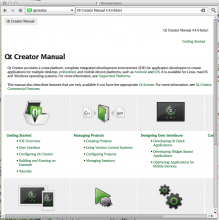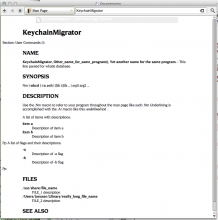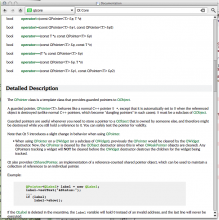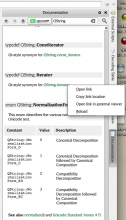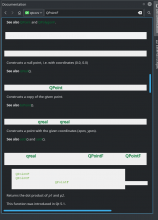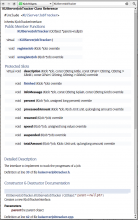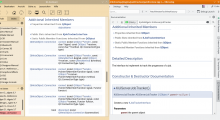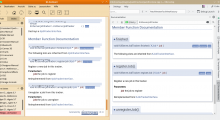I've long thought it overkill to embed an almost full-fledged webbrowser inside KDevelop just for browsing Qt help (and even more so for the simpler CMake docs and man pages).
Qt's Assistant uses QtTextBrowser by default; I have been adapting its implementation to KDevelop's document viewer.
As far as I can tell it works more than well enough to peruse the documentation the way I would in an embedded viewer. The layout is somewhat simpler, more in line with use in an embedded viewer; I find it distracts less from the source.
Using QTextBrowser is implemented as a fallback, you have to disable WebEngine and WebKit support (or not have either component installed) to activate this mode. I would suggest to make this the default mode since it doesn't require extra dependencies, and focus on adding proper support for opening links in an external browser of choice at least for the QtHelp documentation. I currently have a working implementation that adds a contextmenu action to achieve this, using a remotely controlled instance of Qt's Assistant. I am looking into modifying the "Show documentation for" action in the context-help popups to trigger that external viewer also.
